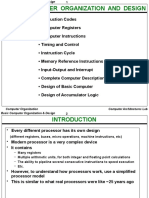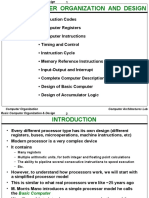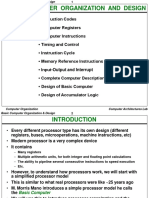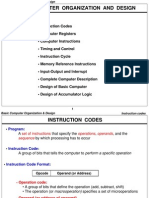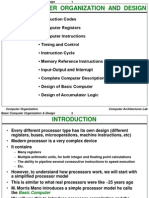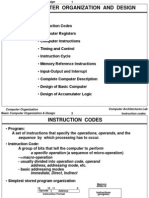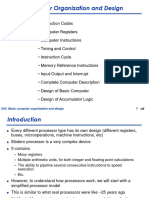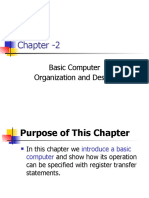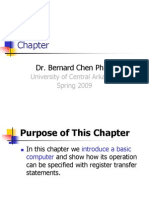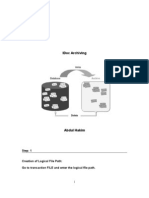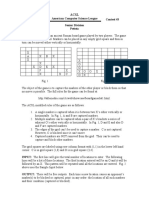0% found this document useful (0 votes)
8 views27 pagesSlide 2
The document provides an overview of basic computer organization and design, focusing on instruction codes, computer registers, and the instruction cycle. It describes the structure of a simplified processor model, including its components such as the CPU and memory, and details the function and format of various instructions. Additionally, it outlines the roles of different registers and the control unit in executing machine instructions.
Uploaded by
nvarshith471Copyright
© © All Rights Reserved
We take content rights seriously. If you suspect this is your content, claim it here.
Available Formats
Download as PDF, TXT or read online on Scribd
0% found this document useful (0 votes)
8 views27 pagesSlide 2
The document provides an overview of basic computer organization and design, focusing on instruction codes, computer registers, and the instruction cycle. It describes the structure of a simplified processor model, including its components such as the CPU and memory, and details the function and format of various instructions. Additionally, it outlines the roles of different registers and the control unit in executing machine instructions.
Uploaded by
nvarshith471Copyright
© © All Rights Reserved
We take content rights seriously. If you suspect this is your content, claim it here.
Available Formats
Download as PDF, TXT or read online on Scribd
/ 27

